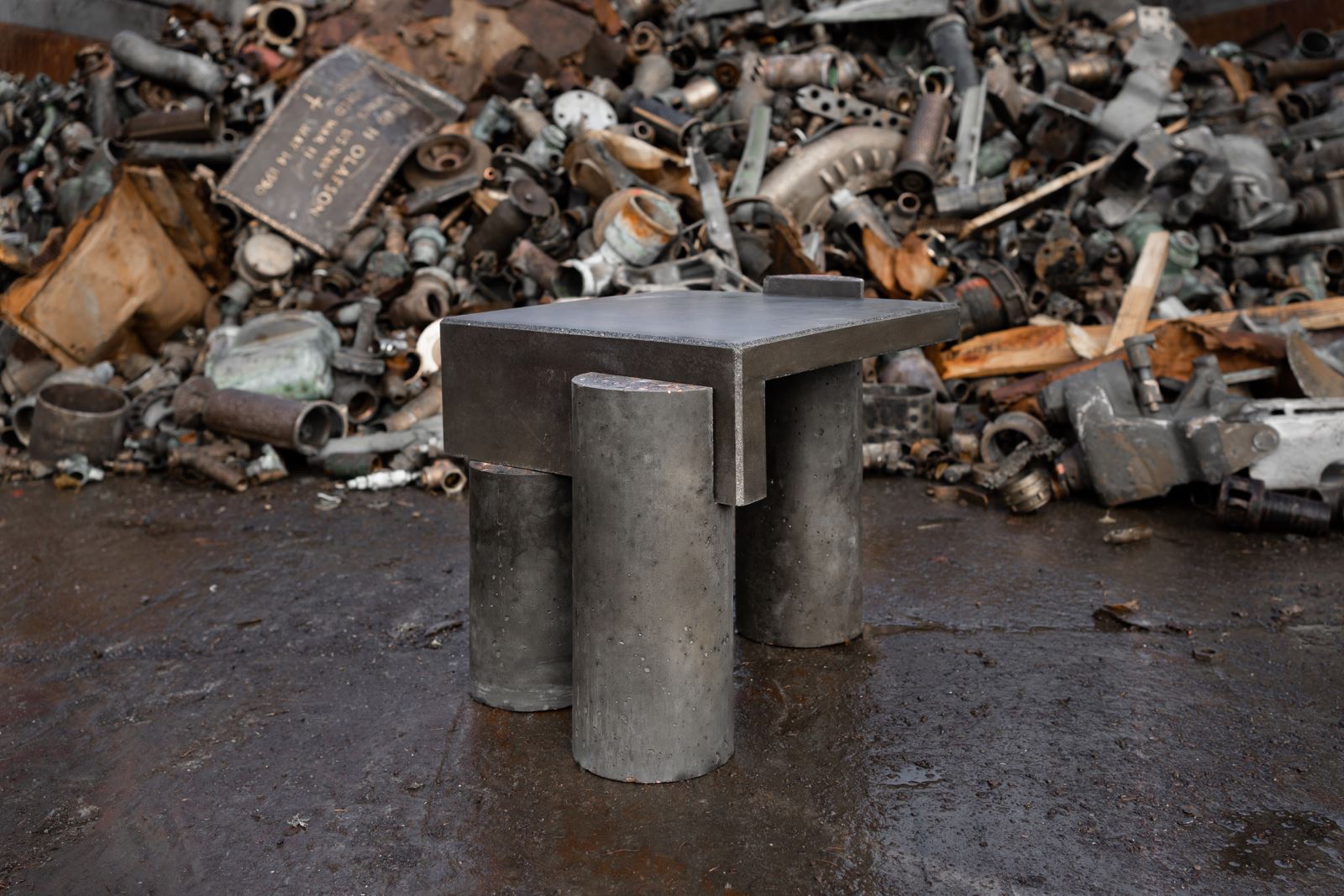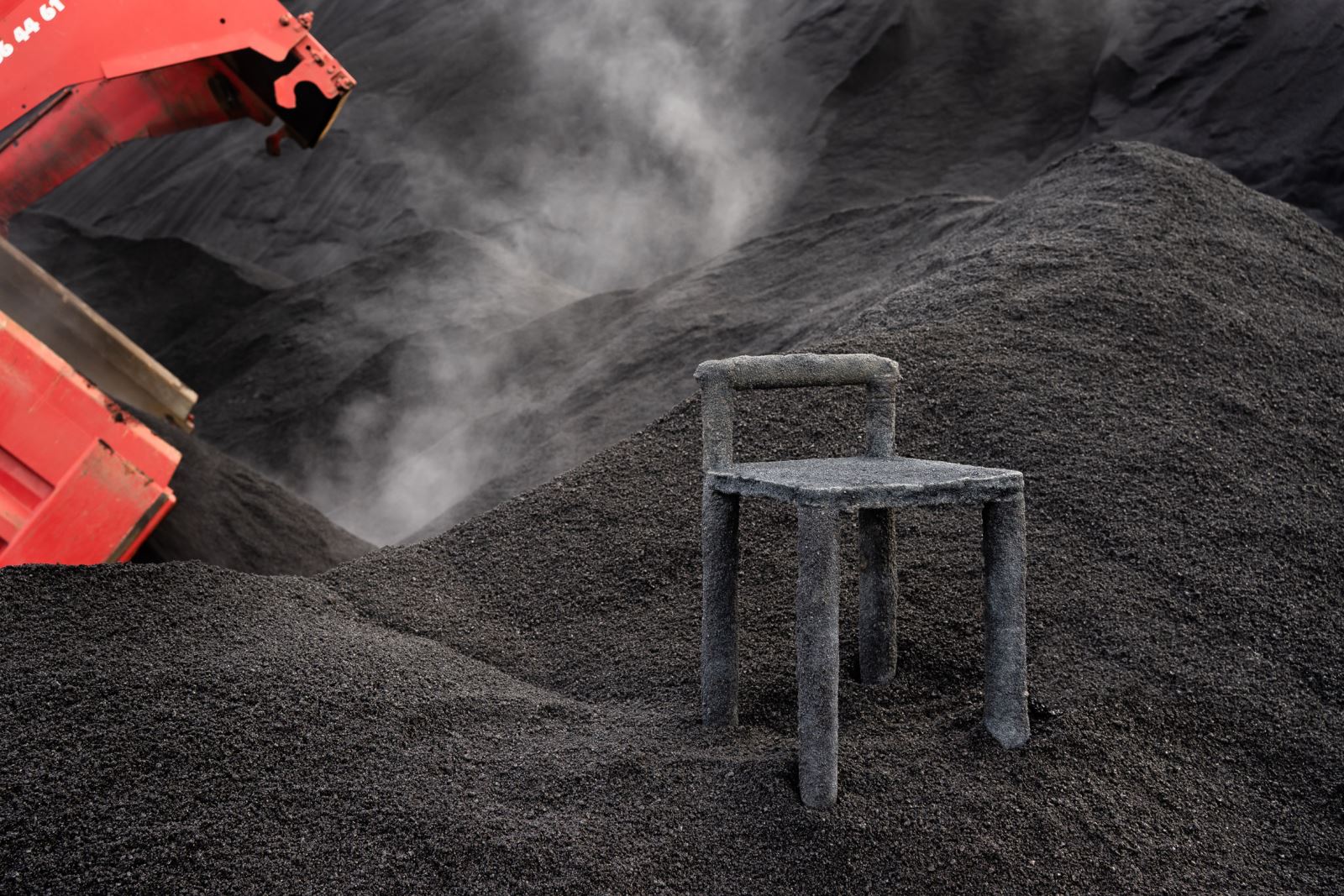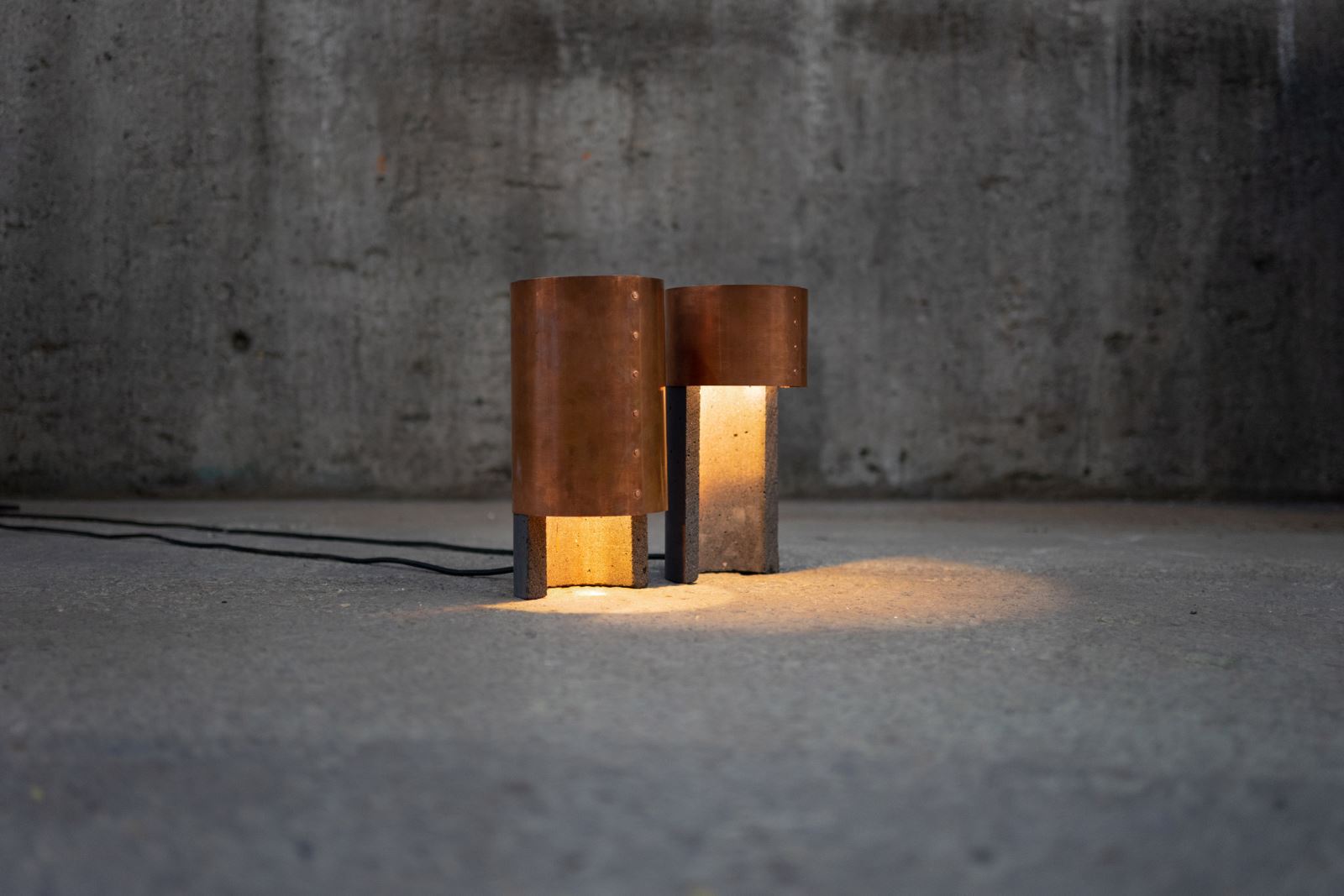Multidisciplinary collective Studio ThusThat explored the "invisible" material of copper as a low-carbon alternative to concrete when developing its This is Copper furniture collection.
Made using waste taken from a copper factory in Belgium, This is Copper comprises a series of objects including chairs, lamps and mirrors.
Each piece aims to demonstrate the potential of copper as a more sustainable alternative to cement, the production of which accounts for around eight per cent of global CO2 emissions per year.
Royal College of Art graduates, Kevin Rouff, Paco Böckelmann and Guillermo Whittembury who make up Studio ThusThat experimented with various production processes to expose different characteristics and aesthetics of the material.
They focused on one particular waste called slag, which is the leftover impurities of the copper smelting process.
They used two forms of slag: sand and powder. In its raw form, slag looks "just like sparkly black sand".
It is poured in a molten state which the designers describe as "man-made lava", into water where it cools rapidly to form a black, glassy stone before shattering into small glassy pieces. It is then piled up in large, black mounds.
Due to the high temperature of the refining process, the slag is primed at a molecular level in such a way that it can be crushed into a powder and activated by an alkali.
This causes the chain reaction of internal bonds to form, resulting in a geopolymer. This means the slag can be used as both a binder and an aggregate by combining its powder and raw coarser forms.
"It replaces the need for cement entirely," said the designers.
The project, which also saw the studio create lamps, demonstrates the potential of copper as a low-carbon alternative to concrete.
The slag geopolymer does not release CO2 in its formation, nor does it use much water, resulting in a carbon footprint that is around 77 per cent smaller than standard cement.
It also boasts a high resistance to heat and shock, corrosion and acid, as well as a high compressive strength and better durability than cement.
Source: Natashah Hitti





